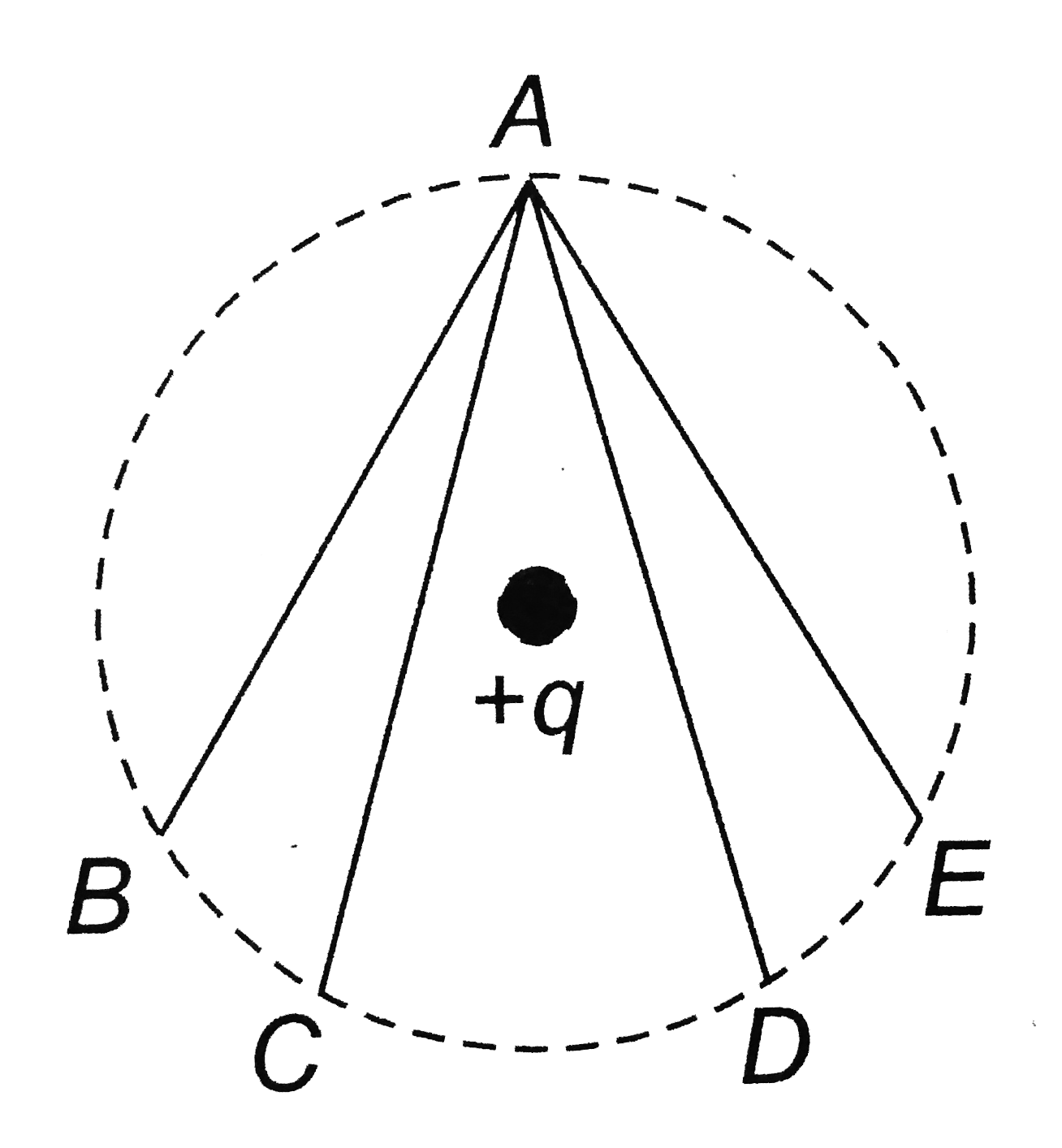STATEMENT 1: The current density at any point in ohmic resistor is in direction of electric field at that point .
STATEMENT 2: A point charge when released from rest in a region having only electrostatic field always moves along electric lines of force.
Statement-1 is true, Statement-2: is true, Statement-2 is a correct explanation for Statement-1.
Statement-1 is true, Statement-2: is true, Statement-2 is NOT a correct explanation for Statement-1.
Statement-1 is true but statement-2 is false
Statement-1 is false, Statement-2 is true
The correct Answer is:C
From relation , the current density at any point in the ohmic resistor is in direction of electric field at that point. In space having non-uniform electric field, charge released from rest may not move along ELOF. hence statement 1 is true while statement-2 is false.
Topper's Solved these Questions
Similar Questions
Consider the three statements in context of electrostatic field lines.
STATEMENT-1 : Electrostatic field lines are continuous curves in space.
STATEMENTS-2 : Electrostatic field lines are always perpendicular to equipotential surface.
STATEMENT-3 : A charge when released in electrostatic field moves along electrostatic field lines.View SolutionA charged particle always move in the direction of electric field. Is this statement true or false?
View SolutionSTATEMENT -1 : Induced charge does not contribute to electric field or potential at a give point .
STATEMENT -2 : A point charge q0 is kept outside a solid metallic sphere , the electric field inside the sphere is zero.View SolutionSTATEMENT-1 : If a charge particle enters into a uniform electric field, then its path must be straight line.
and
STATEMENT -2 : Electrostatic force on a positive charge particle is always in the direction of electric field.View SolutionAssertion A point charge produces a uniform electric field.
Reason Due to a point charge, electric lines of forces are parallel and equidistant.View SolutionSTATEMENT-1 : At a point electrostatic field is zero, then potential at that point may be zero .
and
STATEMENT-2 : Negative of the potential gradient is equal to electrostatic field.View SolutionIntensity of electric field at a point at a perpendicular distance .r. from an infinite line charge, having linear charge density .λ. is given by :
View SolutionSTATEMENT -1 : No two electric field line can intersect each other.
and
STATEMENT-2 : At point of intersection electric fieldmust be zero.View SolutionIn the electric field of a point chargde q, a cetrain charge is carried from point A to B,C,D and E. Then the work done
 View Solution
View SolutionSTATEMENT -1 : When a charged particle is released from a rest in a region of electric field ,its path will represent the electric field lines in the region.
and
STATEMENT-2 : The force experienced by the charged particle will be along a tangent drawn to the electric fieldline at a point.View Solution

